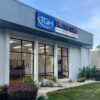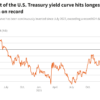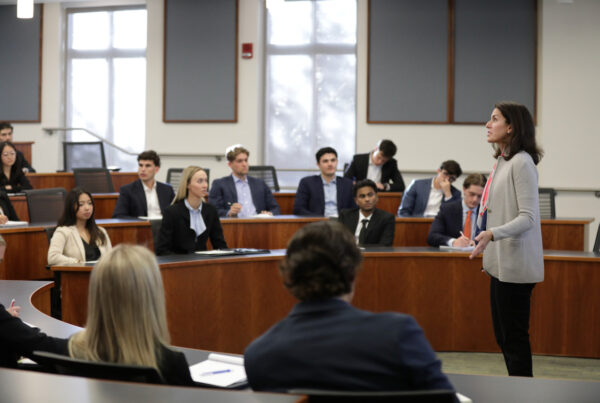David A. Wein, M.D. is the Chief of Emergency Medicine at Tampa General Hospital, System Medical Director for TeamHealth, and an Associate Professor at USF Morsani College of Medicine [he’s also my husband].
April 23, 2020
Rachel Elias Wein:
Since we last spoke a couple of weeks ago, questions related to when and how to reopen retail stores and shopping centers have really come to the forefront. From your vantage point, what are some of the considerations our readers should keep in mind?
David A. Wein:
Whenever decisions potentially affect the health and safety of others, you want to base them on the clearest-possible picture afforded to you by science. For that reason, you can’t talk about reopening without getting into some of the nuances around testing.
REW: That was actually one of my questions: I would assume that testing levels—as of mid-April we’re at about 150,000 tests administered on a daily basis nationally—aren’t where they need to be to give us that clear picture?
DW: Exactly. We need to ramp up testing of both symptomatic and asymptomatic populations to better understand the extent of viral spread. There are some tests that identify viral genetic material—specifically, RNA—and therefore give us a good read on whether someone is infected. In fact, you can even pool samples to test large groups all at once. Let’s say you tested the pooled samples of 250 grocery-store employees. If no viral RNA was detected, now you know it’s a lower-risk group in terms of going back to work.
REW: What about immunological testing? We’re hearing a lot about that as well.
DW: We do need much more immunological testing. However, it’s imperative that we fully understand the limitations of some of the immunological tests that have emerged and received FDA emergency use authorization. The accuracies of these tests range widely, from above 99 percent to 80 percent or even lower. Those lower-accuracy tests ultimately could be more trouble than they’re worth if they give a false sense of immunity.
REW: So ideally a retail business could reopen based on extensive and accurate testing of the community. Local officials could be reasonably confident in saying, ‘This community has a very low number of cases based on the tests.’
DW: That’s right, so long as we’re confident in the accuracy and extent of the testing. But in most communities, we’re nowhere near that. Also the testing would need to continue for ongoing surveillance and contact tracing.
REW: Reopening without that clarity could lead to a so-called ‘M’-shaped curve?
DW: Repeated, strong rebounds of Covid-19, yes, and very likely repeated shutdowns of businesses and communities in direct response. Even China, which imposed a long and severe shutdown, is seeing rebounds of the virus. The future may look like a dance of opening and reclosing regardless as this continues forward.
Rachel, you mentioned local communities. That’s an important distinction: A large state like Georgia may not want to open all of Metro Atlanta, but certain rural areas with low population densities and relatively few cases could be safer to reopen, with precautions in place.
For localized ‘hotspots’ like Miami or New Orleans, it’s especially crucial to have good coordination of testing capacity and other resources. We need to get the virus under control in these hard-hit areas.
REW: Earlier this week, Georgia’s governor triggered a backlash with his decision to open tattoo parlors, hair salons, bowling alleys, massage parlors and sit-down restaurants. The specific precautions included screening workers for fever; employing workplace hand sanitation; wearing gloves and masks if appropriate; and separating workspaces by six feet. What do you think of those guidelines?
DW: Like testing, these types of precautions need to be understood in context. Workplace screening is a good idea, but everyone needs to remember that there’s a period of time before people show symptoms in which they’re shedding virus and can infect others. In other cases, people who never even show symptoms may be highly infectious.
As a result, workplace screening alone will not be effective. I do think it’s good for employees to wear masks, but that is mostly to protect other people. When you think about tattoo and massage parlors, those are close-proximity environments. Clearly, there’s a danger that service-industry workers will be infected by customers, or vice versa.
Hand hygiene is probably the most important measure. We know this disease is spread by touching a contaminated surface and then touching your nose, mouth or eyes. But if I touch a contaminated surface with gloves on and then touch my nose, mouth or eyes, the gloves have accomplished nothing. Gloves may not be as protective as some people believe.
REW: In other words, these precautions shouldn’t be viewed as replacements for community surveillance and contact-tracing—i.e., figuring out who has been exposed down to specific people and places.
DW: Yes. We know how to do contract tracing, which is used for STDs, tuberculosis and other infectious diseases. You can ramp up contract-tracing capabilities by putting more people on these cases. Another option is to use the kinds of tracking apps that we’ve seen in places like South Korea. Ultimately, some combination of both may be the most effective way to scale up.
REW: Last question: I’m hearing concerns about people who are suffering from other illnesses—even strokes and heart attacks—who refuse to go to the emergency department because they’re afraid of contracting Covid-19. What do you think about that?
DW: I can’t emphasize enough that if you’re experiencing symptoms that, under normal circumstances, would have prompted you to go to the emergency department, you should still go to the emergency department.
At this point, nearly every ED in the country is equipped to take good care of you with appropriate precautions. They’ll put a mask on you as soon as you walk in the door. People who complain of cough and fever will be segregated from other patients. Medical personal will be wearing protective equipment.
If your medical situation is such that you could do a telehealth visit with your primary care doctor, then by all means do that. But I am very concerned about this trend. When the story of the pandemic is told, part of that story will be about the secondary effect of people who incurred complications or even death from serious illnesses because they did not get appropriate or timely care.
REW: I suppose people think they’re being cautious given what’s happening, but if you have chest pain and weakness on your left side, not going to the hospital is hardly ‘cautious’ anymore.
DW: Right. I understand the fear, but it’s imperative for all of us to take a step back and rely on reason and critical thinking, which stand to help us emerge from this crisis sooner rather than later.








